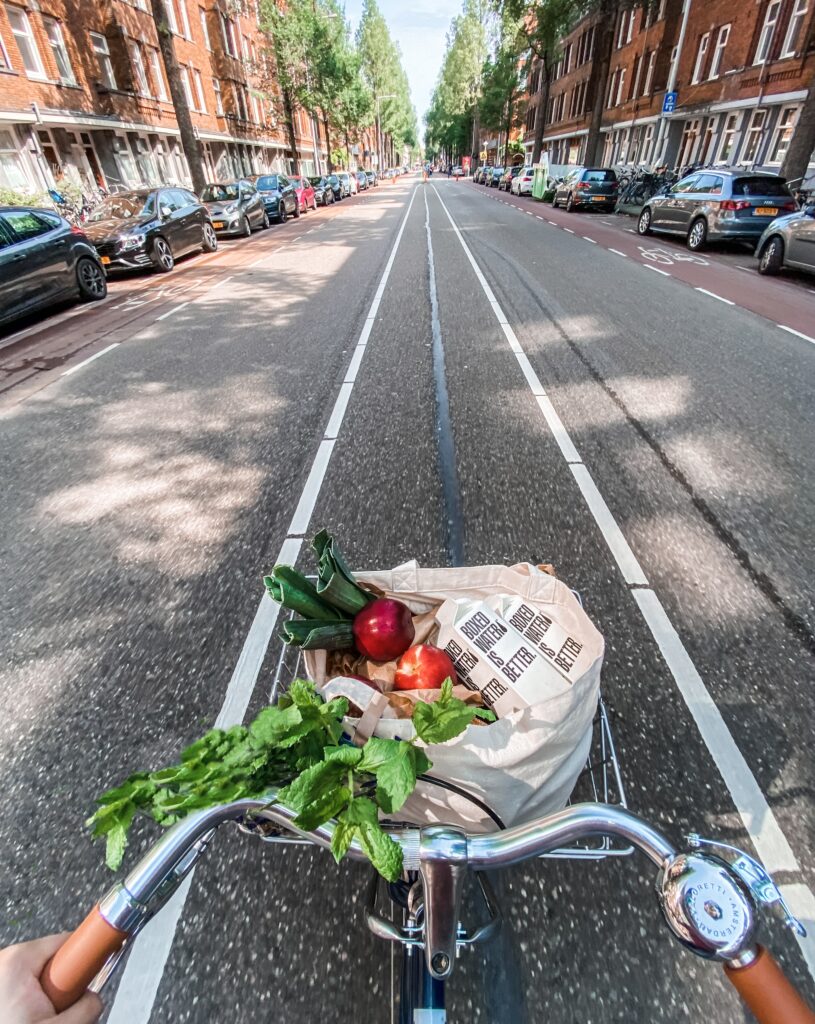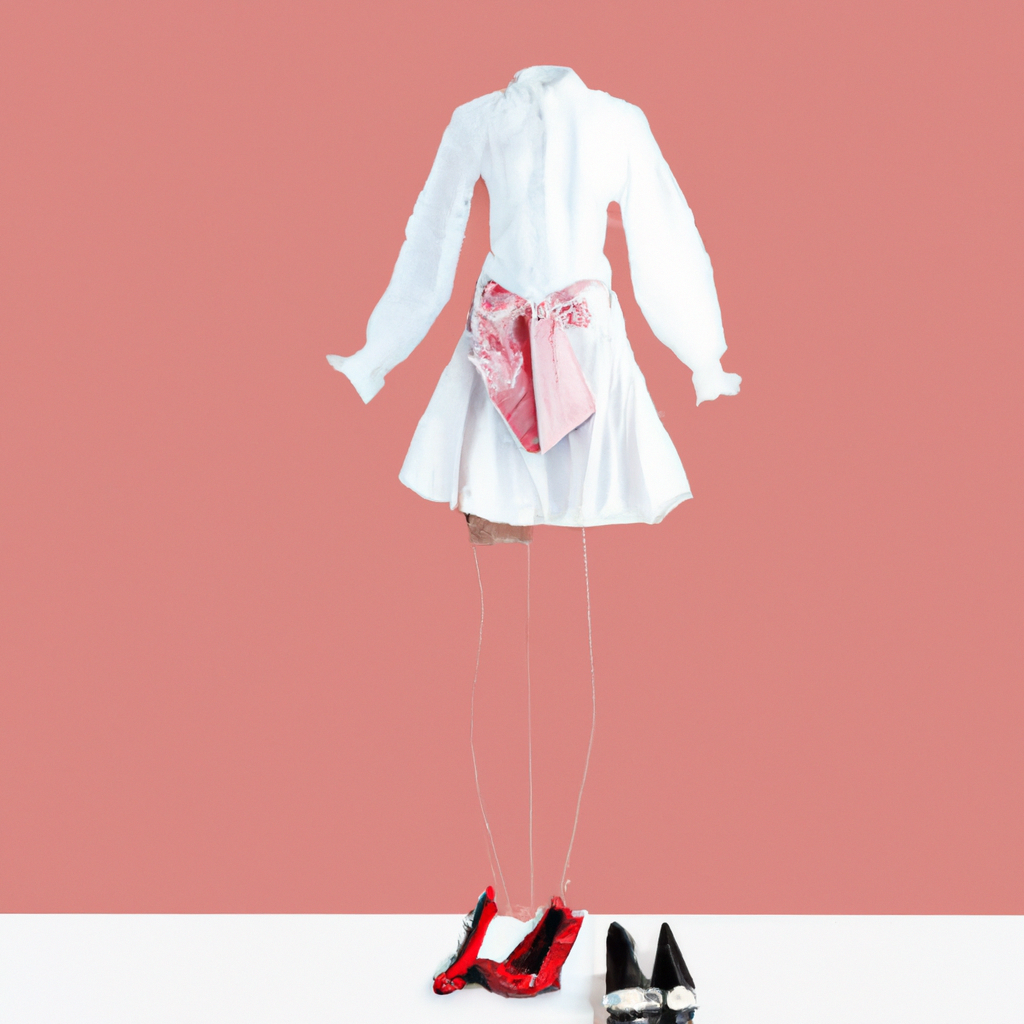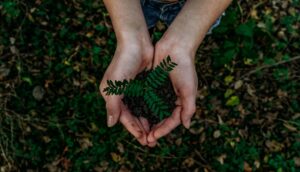Are you tired of the fast fashion industry’s negative impact on the environment and the exploitation of workers? If so, you’re not alone. The slow fashion movement is gaining momentum as consumers, like yourself, are becoming more conscious of the clothes they wear. By adopting a more sustainable and ethical approach to fashion, you can support this movement and make a positive change. So, how can you contribute?

Check Out Our Top Eco Friendly Product Picks On Amazon Here
Choose Quality Over Quantity
When it comes to building a sustainable wardrobe, one of the key principles of the slow fashion movement is to choose quality over quantity. Instead of purchasing inexpensive, low-quality clothing that quickly deteriorates, invest in high-quality, durable pieces that will last for years. While these items may have a higher price tag initially, they will save you money in the long run as you won’t need to constantly replace them.
When selecting clothing, prioritize timeless designs over trendy pieces. Trends come and go, but classic styles remain in fashion season after season. By opting for timeless designs, you can create a versatile wardrobe that transcends fleeting trends. This approach not only reduces the need to constantly update your wardrobe but also contributes to minimizing waste in the fashion industry.
Additionally, keep an eye out for sustainable and ethically-made brands. These brands prioritize the well-being of both the environment and the workers involved in the manufacturing process. Look for certifications such as Fair Trade, which ensures that workers receive fair wages and safe working conditions. By supporting these brands, you are promoting a more ethical and sustainable fashion industry.
Shop Secondhand
Another important way to support the slow fashion movement is by shopping secondhand. Rather than buying new clothing, explore thrift stores and consignment shops in your area. You’ll be surprised by the gems you can find at a fraction of the original price. Shopping secondhand extends the life cycle of clothing and reduces the demand for new products, thereby reducing the environmental impact of the fashion industry.
In addition to thrift stores, consider participating in clothing swaps or organizing one with friends. This fun and sustainable way to refresh your wardrobe allows you to trade items you no longer wear for new-to-you pieces. Not only does this help reduce textile waste, but it also allows you to connect with your friends and support each other in embracing sustainable fashion practices.
Utilize online platforms for buying and selling pre-loved items. There are numerous websites and apps that facilitate the buying and selling of secondhand clothing, making it easier than ever to find unique pieces and give new life to items you no longer wear. By shopping secondhand online, you can support a circular economy and contribute to the reduction of clothing waste.
Check Out Our Top Eco Friendly Product Picks On Amazon Here
Repair and Upcycle
Instead of discarding clothing at the first sign of damage, consider repairing it. Learning basic sewing skills, such as stitching up a small tear or re-attaching a loose button, can go a long way in extending the lifespan of your clothing. There are numerous tutorials and resources available online that can help you learn these skills. By repairing your clothing, you save money and reduce the need for new purchases.
Furthermore, get creative and transform old items into something new. Turn a worn-out pair of jeans into shorts or repurpose a dress into a skirt. By upcycling your clothing, you give it a new lease on life, adding unique and personalized touches to your wardrobe. This not only promotes sustainability but also allows you to express your creativity.
Additionally, support local seamstresses and tailors for more complex repairs or alterations. They have the expertise to repair clothing that you may not be able to fix yourself. By investing in these services, you not only support local businesses but also contribute to the longevity of your clothing.
Embrace Minimalism
Adopting a minimalist mindset when it comes to purchasing clothing is a fundamental aspect of the slow fashion movement. Instead of buying clothes impulsively or for the sake of a fleeting trend, focus on curating a capsule wardrobe with versatile pieces that can be mixed and matched. By investing in a smaller number of high-quality items that you truly love, you can avoid the habit of excessive consumption and reduce the environmental impact of the fashion industry.
Consider exploring a clothing rental subscription service for special occasions. If you only need a dress or suit for a specific event, renting can be a more sustainable option than buying a new outfit that may only be worn once. Rental services allow you to access a wide range of designer garments without the commitment of ownership. This not only saves you money but also reduces the demand for new clothing production.

Educate Yourself
To effectively support the slow fashion movement, it’s crucial to educate yourself about sustainable fashion practices. Research and learn about different aspects of the industry, such as the environmental impact of textile production, the treatment of garment workers, and the importance of supply chain transparency. By understanding these issues, you can make informed decisions and align your choices with your values.
Stay informed about brands’ transparency and ethical standards. Many brands now disclose information about their supply chain and production processes, making it easier for consumers to make conscious choices. Look for brands that prioritize transparent practices and avoid those that are vague or non-committal. By supporting brands with strong ethical values, you can contribute to creating a more sustainable and responsible fashion industry.
Additionally, educate yourself about the impact of fast fashion on the environment and workers. Fast fashion, characterized by low-cost, rapidly-produced clothing, often comes at the expense of the environment and workers’ rights. By understanding these consequences, you can empower yourself to make more sustainable choices and advocate for change within the industry.
Demand Transparency
Support brands that proactively disclose information about their supply chain and production processes. When shopping, seek out brands that prioritize transparency and accountability. By supporting these brands, you send a message to the fashion industry that transparency is essential and that consumers demand ethical practices.
Ask questions about a brand’s social and environmental practices. Don’t be afraid to reach out and inquire about their sustainability initiatives, worker welfare programs, or certifications they hold. By engaging with brands and showing interest in their practices, you encourage them to take sustainability more seriously and become more accountable for their actions.
Take advantage of social media and customer feedback to encourage transparency. Engage with brands through comments and messages to express your interest in their sustainability efforts. Share your thoughts and concerns with others on social media, as collective consumer pressure can be a powerful catalyst for change. By advocating for transparency, you contribute to a culture of accountability within the fashion industry.

Support Local and Independent Designers
Discover local fashion designers and artisans in your area. Many designers prioritize sustainable and ethical practices, creating unique and responsibly-made clothing. Attend local markets and pop-up shops to find these designers and support their work. By investing in their creations, you not only contribute to a more sustainable fashion industry but also acquire one-of-a-kind pieces that reflect your personal style.
Invest in small businesses that prioritize sustainability and fair wages. Local businesses often have closer relationships with their suppliers and can provide more transparency about their sourcing and manufacturing processes. By supporting these businesses, you contribute to the growth of local economies and help create a more sustainable fashion ecosystem.
Choose Sustainable Fabrics
Opt for clothing made from sustainable fabrics whenever possible. Organic cotton, linen, and hemp are examples of eco-friendly fibers that require fewer chemicals and have a lower impact on the environment compared to conventional cotton or synthetic materials. By choosing these fabrics, you support sustainable farming practices and reduce your carbon footprint.
Avoid fabrics that involve harmful chemicals or excessive water usage in their production. Some fabrics, such as polyester, acrylic, and nylon, are derived from petroleum and have a significant environmental impact. Look for alternatives that are certified to have minimal environmental impact, such as GOTS (Global Organic Textile Standard), which ensures the use of organic fibers and ecological and socially responsible manufacturing processes.

Reduce Water and Energy Footprint
Take steps to reduce the water and energy footprint of your clothing. Wash your clothes less frequently and opt for cold water when you do. Many garments don’t require washing after every wear, and using cold water can significantly reduce energy consumption.
Air dry your clothing instead of using a dryer. Line drying not only reduces energy usage but also helps preserve the quality of your clothes by preventing shrinkage, fading, and wear caused by heat. Utilize outdoor drying racks or indoor drying racks during colder months to save energy and money while extending the life of your clothing.
Finally, choose energy-efficient machines and detergents when laundering your clothes. Front-loading washing machines are more energy and water-efficient compared to top-loading machines. Similarly, using eco-friendly detergents that are free from harmful chemicals reduces the environmental impact of your laundry routine.
A Guide on How Consumers Can Champion the Slow Fashion Movement
Spread the Word
One of the most impactful ways to support the slow fashion movement is by spreading the word and sharing your knowledge with others. Educate your friends and family about the benefits of sustainable fashion and the importance of conscious consumerism. Start conversations about the slow fashion movement and encourage others to join in supporting ethical and sustainable fashion practices.
Share resources, documentaries, and articles on social media to raise awareness and provide others with valuable information. By using your platform to spread awareness, you can reach a wider audience and inspire others to make more sustainable choices.
Encourage others to join in supporting ethical and sustainable fashion practices. Organize clothing swaps, participate in local sustainability initiatives, and engage with your community to create a collective effort. By working together, we can make a significant impact on the fashion industry and pave the way for a more sustainable future.
Check Out Our Top Eco Friendly Product Picks On Amazon Here




